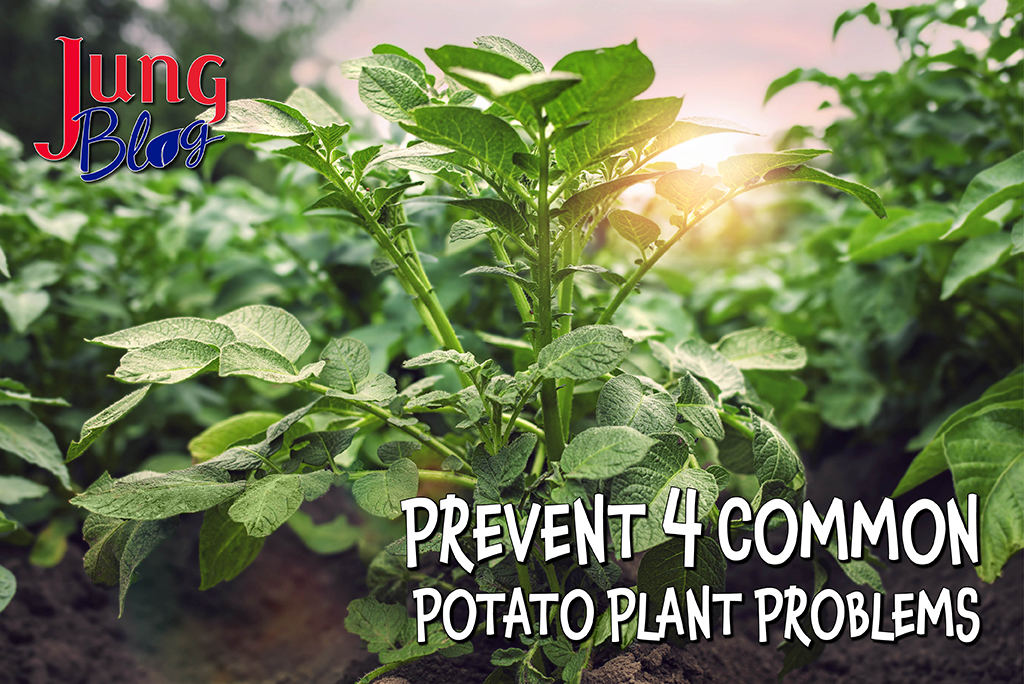
Potatoes are some of the easiest crops for home gardeners to grow, but this does not mean that they can’t have problems. Just like most garden vegetables, the best potato tubers come from the healthiest, well-cared-for plants. Don’t let common garden problems get the best of your potatoes. Be prepared and practice proper prevention to harvest some pretty potatoes this year.
Skip The Scab

Scab is probably the ugliest named garden disease, and it happens to affect several root-type veggies, but potatoes are impacted most. Scab is caused by soil bacteria called Streptomyces. There are several different pathogens but it’s not important to know them because they all behave the same way and the prevention of them is the same. These bacteria cause ugly, raised, or sunken round scabby lesions on the surface of the potatoes themselves; hence the name “scab”.
Virtually all soils contain these scab-causing Streptomyces, but it is the density of the bacteria population that leads to the severity of scab infections. The higher the population, the worse an infection will be.
5 Critical Steps To Prevent Scab
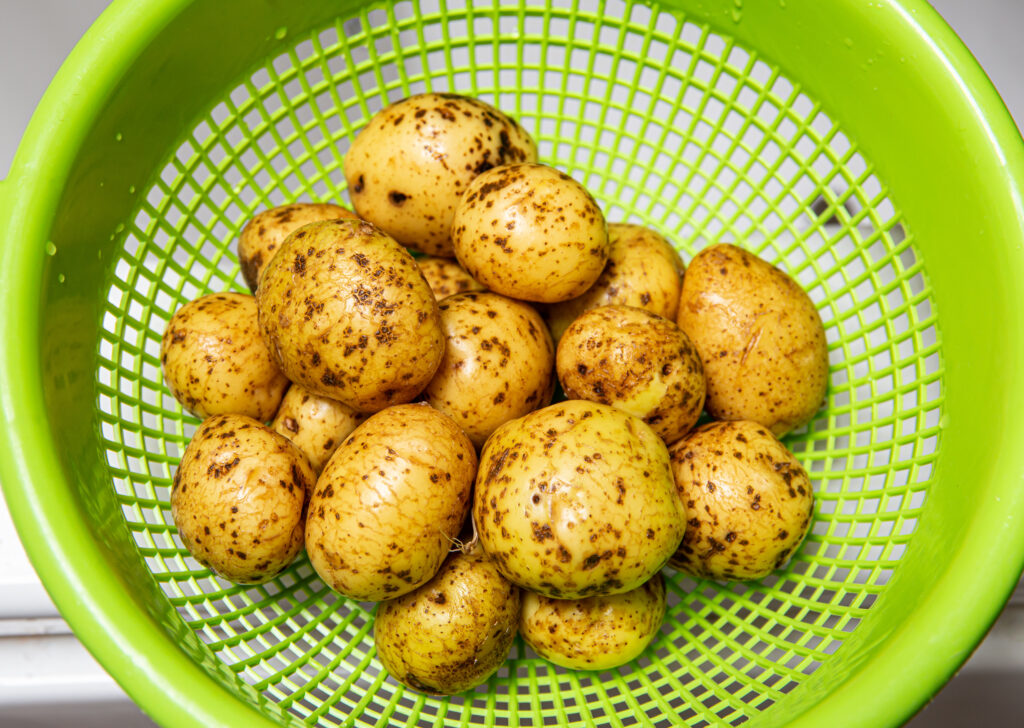
- Rotate your potato planting plots year to year.
- Keep the soil pH more acidic than normal (5.0 to 5.5 is recommended)
- Plant scab-resistant cultivars like ‘German Butterball’, ‘Red Norland’, ‘Gold Rush’, or ‘Fingerling Salad’.
- Maintain proper soil moisture during and just after the tuber set.
- Add plenty of organic matter like leaf compost, but avoid animal manures that raise the pH and may increase Streptomyces populations.
Bypass the Beetles

Colorado potato beetles are one of the most frustrating potato insect pests to deal with. These are small, humpbacked beetles easily identified by their black and white striped wing covers and orange with black-spotted heads. The beetle larvae and adult beetles both chew large holes in leaves and when populations are great, they can defoliate entire potato plants. The critical line of defense against potato beetles is to assure their populations do not build up to devastating quantities.
5 Steps To Prevent Colorado Potato Beetles
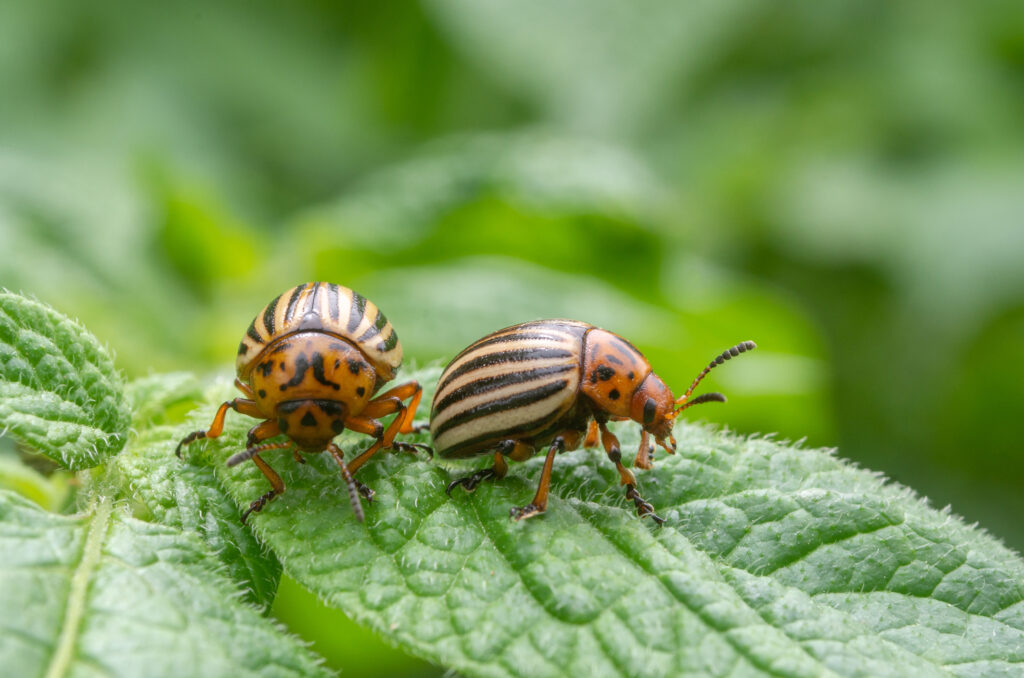
- CPB is the most vulnerable and easiest to control in the egg stage. The orange/gold-colored cluster of tiny eggs on the underside of potato leaves can be easily squished or removed prior to hatching.
- Rotating plantings is also recommended. Pest populations will continue to increase if the adults are able to find suitable and reliable host plants.
- Planting trap crops of eggplant or ground cherry between potato plots can help lure these beetle pests away from desirable potato plants.
- Beetles are or can become resistant to many pesticides due to over-spraying, however, they cannot develop resistance to Spinosad that is used in Capt.’s Jack’s Deadbug Brew®. Many organic gardeners will reach for Neem oil products, but these are essentially ineffective for the control of well-armored adults. Eggs and soft-bodied larvae can be effectively suffocated if they are sprayed efficiently enough. Desiccants like Safer® brand insecticidal soaps are effective against eggs and instars as well if spray coverage on the undersides of leaves is good.
- Deploying floating row covers in late spring to early summer is another excellent option. Preventing the first generation of females from laying eggs in the first place can help a lot.
Avert the Aphids
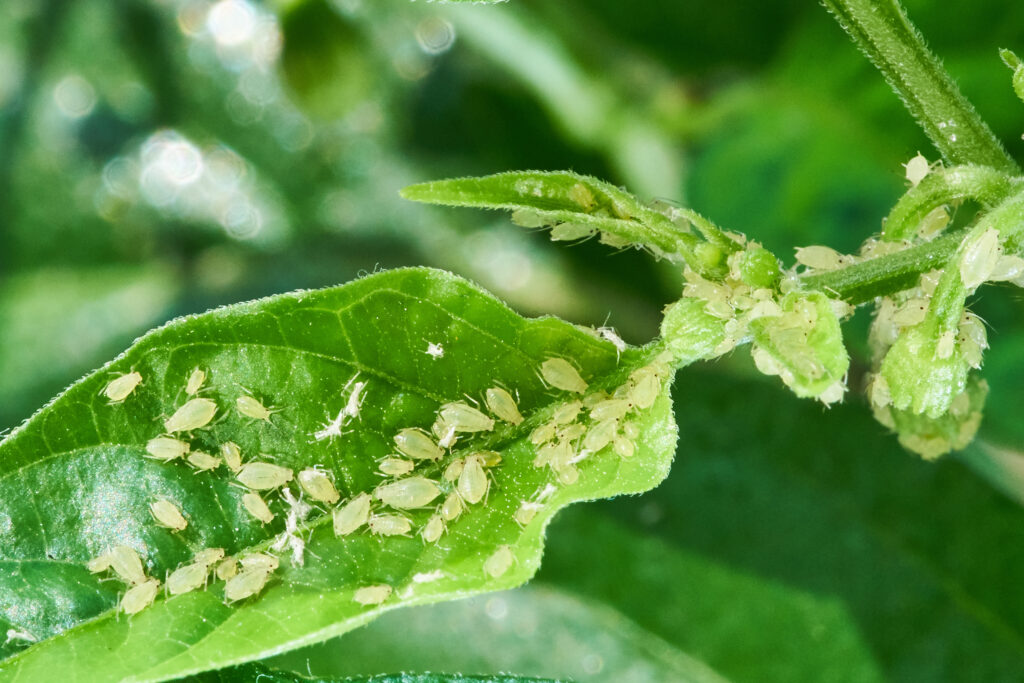
Aphids are a common pest to nearly every garden plant. When present, potato aphids will colonize and feed on the underside of potato leaves, leaving yellowish to shiny speckled-looking leaves. Although these sap-sucking pests can reduce plant vigor and affect the general growth of the plants, the real danger is that potato aphids spread various viruses from crop to crop.
4 Way To Prevent Aphids
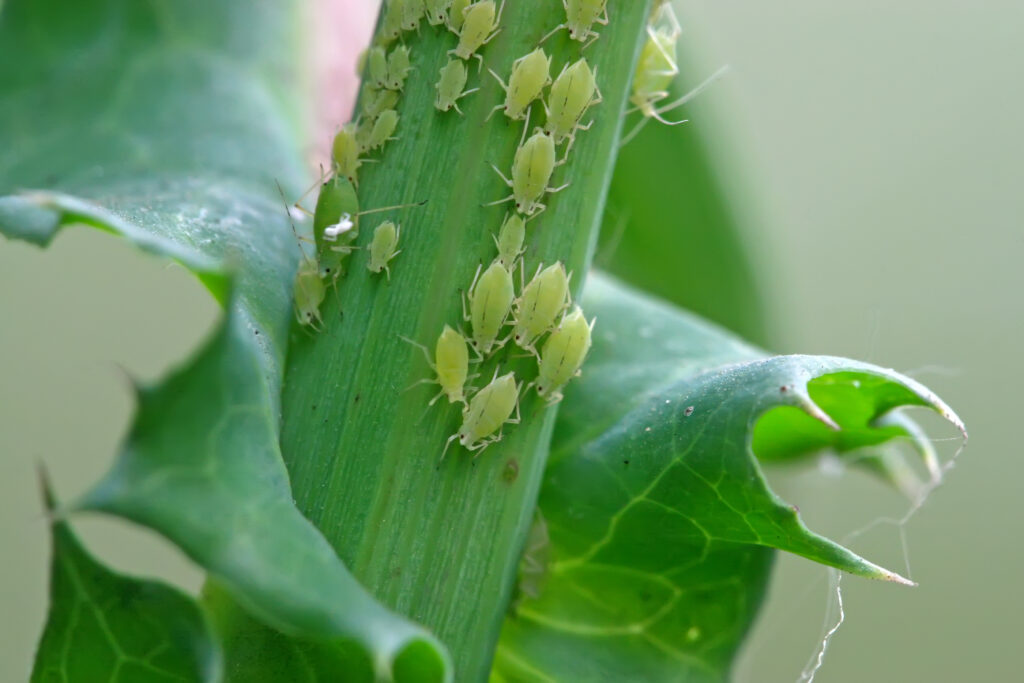
- Keep host weeds like nightshades and mustard types nearby to a minimum.
- Utilize floating row covers or fleece tunnels for early maturing plants.
- Monitor plants frequently when summer temperatures become favorable for adult activity, check under leaves thoroughly.
- Utilize Safer® brand insecticidal soaps.
Fend Off Flea Beetles

These tiny, shiny black or iridescent green beetles arrive early in the growing season chewing tiny shot-hole patterns into plant leaves. Tiny leaf holes don’t seem too intimidating until beetle populations rise, then entire leaves can be devoured overnight. Follow these clues for fending off Flea beetles:
4 Ways To Avoid Flea Beetles
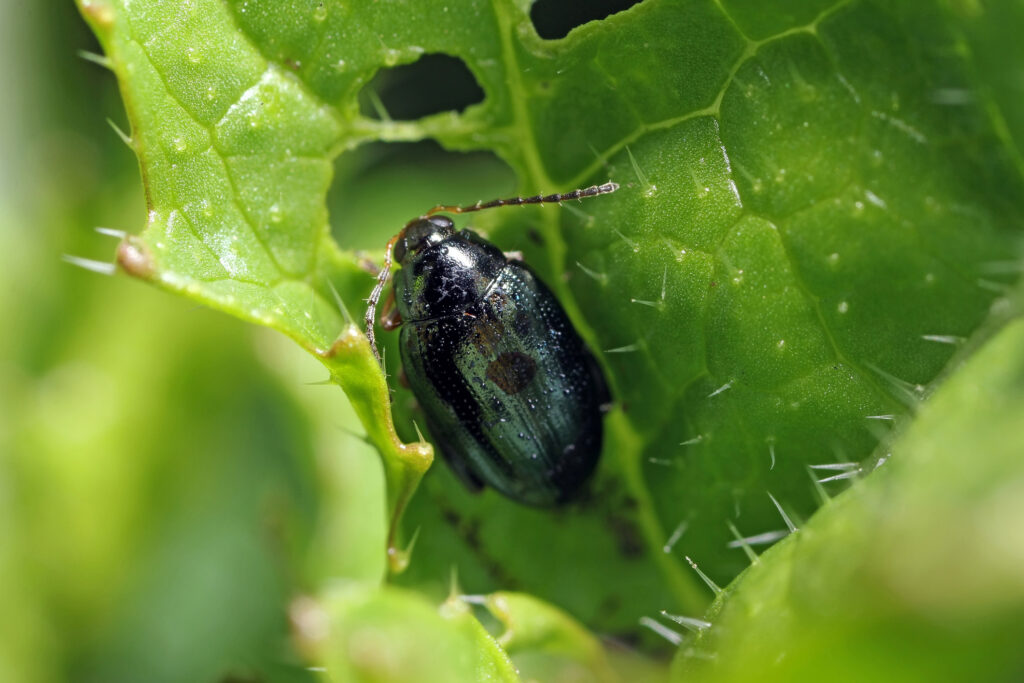
- Keep host weeds controlled in areas adjacent to the garden.
- They are beetles, with tough armor that resist oil pesticides like Neem. Instead, utilize products with Spinosad, like Capt. Jack’s Deadbug Brew®.
- Plant crops later, as Flea beetles are early-season pests.
- Deploy floating row covers or fleece grow tunnels that are reusable.
When it comes to effective pest control in our vegetable gardens, the answer is rarely one simple “easy button” step. The best control and management for potato pests are a series of steps to deter, trap and limit the number of pests from season to season. Be prepared!
Other Recommended Reading

- Potato Growing Guide
- 11 Potatoes To Plant On Good Friday
- Growing Vegetables Indoors From Seed
- Planning Your 2024 Vegetable Garden
- Horticultural Oil For Pest Control
- Companion Planting Guide
At Jung Seed Co, we strive to be your go-to guide for all your gardening needs. Our YouTube channel The Garden Doctor by Dick Zondag is where he provides gardening tips for all levels of gardeners. When you need reliable gardening advice, turn to the trusted experts at Jung.
View our new catalog online or browse our website for your gardening favorites. To receive info on new products, exclusive deals, and specials, be sure to sign up for our weekly email. Join our Facebook page, to discuss all things gardening!
